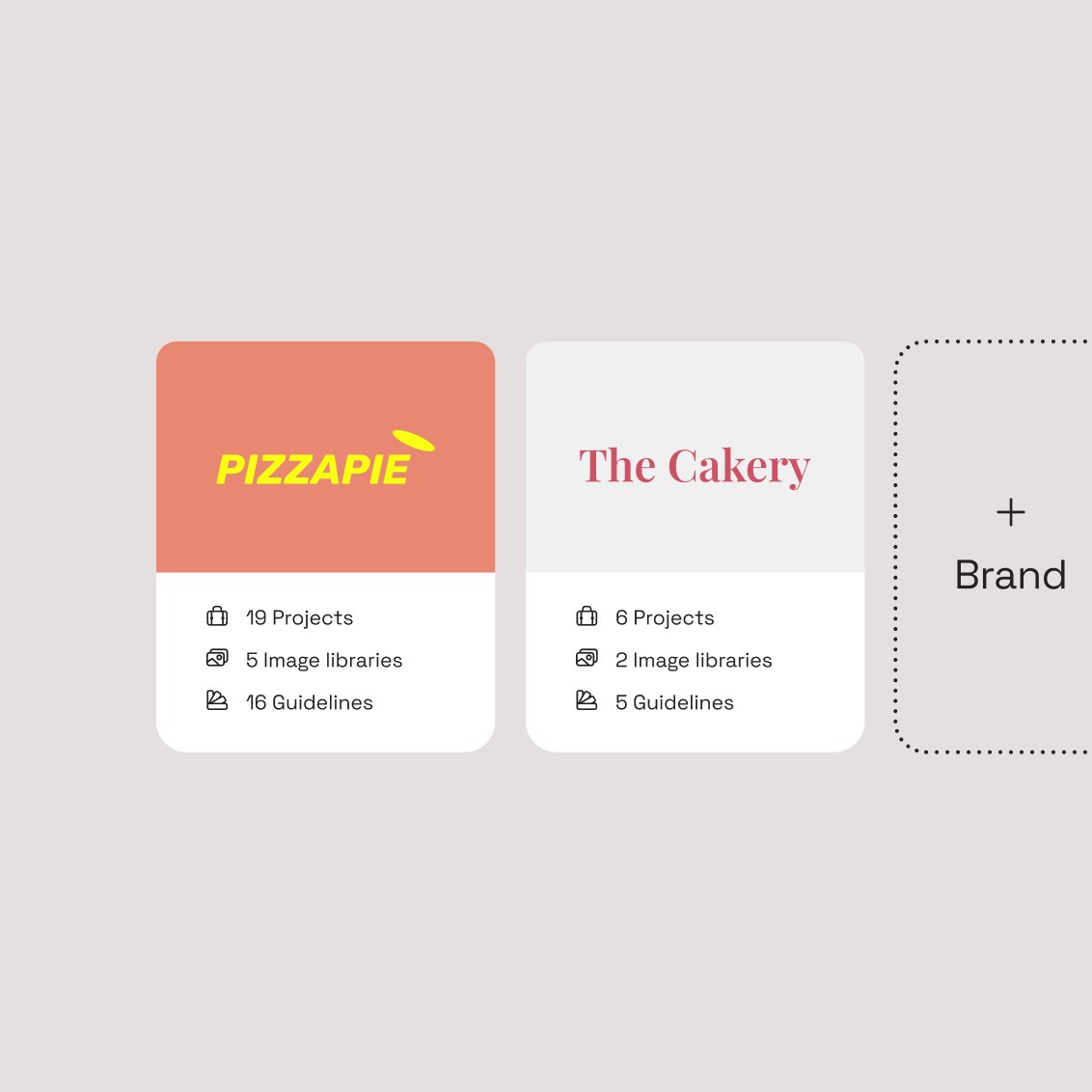Brand workshops are structured and goal-oriented meetings that help you avoid inconsistent branding. They encourage key stakeholders to step outside of daily work to focus on the brand as a whole. By scheduling regular brand workshops, managers can identify and evaluate the impact their team efforts have on the greater brand identity and create the foundation for successful growth.
How to organize a brand workshop
Organizing an annual workshop helps you maintain brand consistency. It can also help you identify opportunities for improvement, recognize when it’s time for a rebrand, and address other problems, such as a decrease in employee or customer engagement. To organize your brand workshop, follow these four steps.

Identify the workshop’s purpose
Ask yourself what you’re hoping to accomplish through the workshop. Your answer will help you set goals that ensure collaborative time is productive: You know what exercises to run and have an action plan for moving forward once it ends.
For example, if you’re organizing a branding workshop as a form of maintenance, you may only need to conduct a few exercises to take the pulse of your brand. But if you’re noticing problems, you’ll need more targeted activities that help you identify the root of the issues and brainstorm solutions.
Create an invite list
The workshop participants’ decisions impact how everyone within an organization contributes to the brand. So, all attendees must have a deep understanding of the brand, know how different teams interact with it, and contribute meaningfully to the exercises.
Here are some of the most important stakeholders to invite to workshops:
- Business leaders, including the CEO and CMOs, support overarching company goals. Their participation in such exercises also gives C-level executives insight into branding efforts, which helps them better communicate their value and impact to the investors that fund them.
- Brand strategists offer expertise to help provide greater context for valuable brainstorming sessions. They can also make recommendations, like how to pivot messaging for greater impact.
- Brand managers share insight into daily marketing efforts, larger campaigns, and their success metrics.
- Sales managers interact with customers and understand their pain points. This allows them to explain how consumers perceive the brand, including whether it lives up to its value proposition.
This isn’t an exhaustive list for every workshop. Depending on what you hope to accomplish, you may need to invite other stakeholders so you don’t miss valuable perspectives and insights. For example, if you’re revamping your messaging and need to update resources like design systems, you’ll want to invite someone from the development team who understands how employees use your brand elements for designing a new web page.

Choose a facilitator
A workshop facilitator guides participants through various exercises and helps remove roadblocks to ensure the best possible outcomes. This includes everything from offering additional prompts that encourage better discussions to resolving conflicts that limit collaboration.
You can hire an experienced professional facilitator — via a service like Workshopper — to help with workshop planning and facilitation. Or you can ask an experienced team member who can create a positive atmosphere and keep the workshop on track.
Choose your branding exercises
A branding exercise is a guided activity during your brand workshop. Refer to your workshop goals and consider what actions will help you achieve them.
To give you a foundation, we’ve provided an overview of some of the most common branding exercises in the next section.
If you hire a workshop facilitator, they’ll take care of this for you and discuss your branding needs before they recommend exercises. But if you’re facilitating your own workshop, you’ll need to research and choose activities that you can realistically run with your knowledge and experience.

Branding exercises help structure workshops by offering talking points, inspiration for brainstorming, and task lists to keep your workshop on track.
Some exercises build on top of the work of others — identity activities rely on the insights you uncover during positioning exercises, for example. But others stand alone, such as a brand audit, which might be all you need to check your brand’s health.
In this section, we’ll cover some of the best exercises to run during a branding workshop.

An audit helps you evaluate your brand’s performance in the greater marketplace. Regularly conducting them ensures you meet your goals by identifying your strengths and areas for improvement. That way, you stay competitive.
How to audit your brand
First, ask workshop participants to identify your brand’s competitors. Pay attention to how they describe the competition, particularly in comparison to your brand.
Next, conduct a SWOT analysis of your brand and ask some of the following questions:
- What does your brand do better than its competitors?
- What do your competitors do better than you?
- What are the biggest opportunities for your brand right now?
- Are there any new brands on the market that could be a threat?
Write down the strengths and weaknesses that come up during the workshop discussion. Include opportunities you want to pursue and threats to keep an eye on. The more comprehensive the document, the better you can assess and improve your brand’s health.

Brand positioning is how you communicate your brand identity to your customers and how they interpret your messaging — like how Nike positions itself as a lifestyle brand rather than simply focusing on athletics.
Positioning directly influences how your audience views your brand and its products and helps clarify where your brand fits in the broader marketplace. That way, you know how to differentiate yourself from competitors and better target your audience.
How to write a positioning statement
Ask workshop participants to evaluate three key factors that impact brand success:
1. Target audience: Before the workshop, send surveys to customers and post polls on social media, asking questions like, “What’s the most important factor when you make a purchase?” Ensure you have resources to help attendees understand who customers are and what they value.
2. Competition: Review your most recent brand audit for competitor insights to help you differentiate your brand and find that offering none of your competitors have.
3. Branding strengths: Review the SWOT analysis from your last audit to identify what’s working well for your brand.
Ask workshop participants to use these details to write a concise positioning statement that explains:
- Who your audience is
- How your brand and products meet customer needs
- What separates your brand from the competition
After the workshop, create a plan for testing the positioning statement, including distributing it internally and asking employees for feedback. It’s also a good idea to plan a short follow-up meeting to review feedback and revise the statement before officially launching it.

Brand identity combines your brand’s mission, values, and visual elements.
A brand identity exercise helps you understand how individual components build brand identity. That way, you can establish a recognizable and cohesive identity that your audience will understand and want to support.
How to uncover brand identity
Take another look at the positioning statement to ensure everyone understands where the brand fits in the marketplace. Then, discuss how different teams collaborate to create identity.
Keep conversations on track by including the following questions:
- Does our audience recognize elements like our logo?
- Do marketing communications use consistent messaging?
- How well do customers understand our mission and values?
Revisit any customer data that helps answer these questions, including the customer surveys sent for your brand audit. Use insights from this conversation to create brand guidelines to help everyone within the organization understand how to communicate the brand’s identity.

Conducting a brand persona exercise helps you define the personality, tone of voice, and values that allow you to build a relatable and personal brand. That way, you can create a more human connection with your target audience.
How to define a brand persona
To understand what kind of persona will resonate with your audience, you need to know who your customers are and what they care about. Pull out any existing customer personas the marketing and product teams use to understand who the real people are who support your brand at a deep level. Or take time during the workshop to conduct a warm-up where you ask participants to brainstorm adjectives that describe the brand.
Discover your brand persona by including the following questions in your discussion:
- What personality traits should the brand embody? Is it friendly? Knowledgeable?
- If the brand were a person, what would they do for work?
- How does the brand talk in different contexts, such as social media and email?
- What vocabulary does the brand use when it talks to customers?
Define and document these details to create a style guide that helps different teams understand how to communicate the brand’s persona.

Establishing a brand messaging framework makes it easier to create effective marketing materials that speak directly to your audience.
How to create a messaging framework
Assess your positioning statement and brand persona to determine what an on-brand approach to customer communication looks like. Spark discussions with these questions:
- What have been our most successful brand campaigns? Why were they so successful?
- Which social media platforms does our target audience use the most? Do we have an established presence there?
- What type of content does our audience engage with most?
Use these insights to establish guidelines for how your brand communicates. This should include details such as how often to send emails and post on social media and what to talk about.

A brand story helps communicate the values, purpose, and mission to ensure internal and external stakeholders can connect and resonate with them.
Consider Spotify’s story: The music-sharing app centers on its mission to connect musicians with their fan bases and empower all users to discover new music. And one of the most successful ways it communicates its story is through Spotify Wrapped, which includes users in the brand story by delivering a unique, data-backed “story” about their listening habits over the last year.
How to write the brand story
Revisit your brand persona and messaging to confirm everyone in the workshop understands what core values will connect with your audience. Then, decide what you want to accomplish with a brand story:
- How should the story make our audience feel?
- What topics will resonate with our customers?
- What values should the story emphasize?
Use the rest of the workshop to brainstorm and write a story that clearly communicates your brand’s values and goals. Then, create a plan for testing and presenting your story to employees and the public.
Set yourself up for success with a comprehensive brand strategy
A brand strategy guides your branding efforts and ensures that the branding exercises are more than just a refresher on good branding.
After you conduct a workshop, you’ll have a lot of great insights, resources, and ideas to strengthen and improve your brand. Your strategy will inform how you and everyone else in your organization apply the takeaways successfully.
A digital branding tool like Frontify helps you and your team create a comprehensive strategy and communicate it with your larger organization by providing a digital space for collaboration.
Learn more about how digital branding tools can help you take a more strategic approach to brand management.


